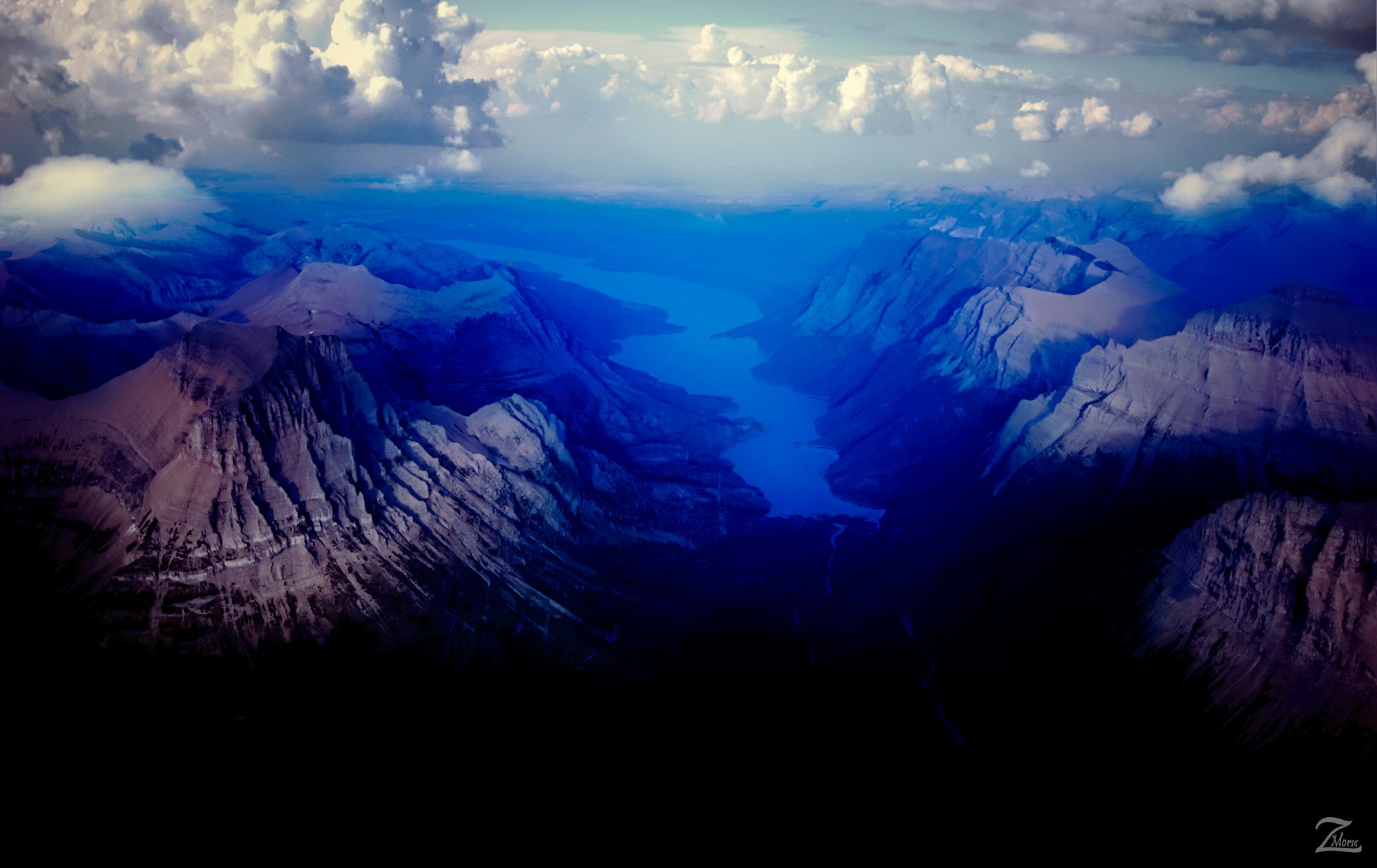This is a late afternoon summer image of Glacier National Park and St. Mary Lake. I lensed this as the sun was low on the horizon in the west behind me as I flew southbound high above the Rocky Mountain Range. Directly below me are Heavy Runner Mountain and Citadel Mountain which are both casting long shadows in the lower the foreground of the image.
In the middle of the image is Saint Mary Lake and at the bottom of the lake you can barely make out Saint Mary River where it joins Virginia Creek to flow into the lake. Following the lake vertically up the image you can clearly see the Narrows where Silver Dollar Beach is opposite of the Golden Stairs.
On the left side of the image are the rugged jagged cliffs of Going-To-The-Sun Mountain in the foreground and Goat Mountain behind it. On the right side of the image in the immediate foreground are the raw cliffs of Little Chief Mountain and up the image a bit behind the shadows lay Mahtotopa Mountain and Red Eagle Mountain.
This is the ancient ancestral homelands of the First Nations Blackfeet Tribes, their huge Nations Reservation (Blackfeet Indian Reservation) lies on the other side of Saint Mary Lake in this image as far as you can see.
Archaeological evidence of First Nations occupation dates back more than 10,000 years inside the boundaries of Glacier National Park. Numerous First Nations Tribes lived in the area around and within what is now the park. They hunted, fished, held sacred ceremonies, and gathered plants for food and sacred medicine.
Explorations to the area by trappers as early as the 1700’s opened the area, and the future Glacier National Park, to trading among European settlers and local long time tribal communities.
(Research Source)
Today, the Blackfeet Indian Reservation covers 1.5-million acres, and shares Glacier Mountain National Park’s eastern border. It is home to around 8,600 members of the Blackfeet Nation, the largest ancestral tribe in Montana.
Further south the First Nations Flathead Reservation covers almost 1.3 million acres primarily along the meandering Flathead River and has approximately 7,000 tribal members of the Confederated Salish and Kootenai Tribes of the Flathead Nation.
(Research Source)
Going-To-The-Sun Mountain was named as such during the winter of 1887-1888 by James Willard Schultz, an early hunting guide in the St. Mary Lakes region. While hunting on Red Eagle Mountain with his Pikuni friend, Tail-Feathers-Coming-Over-the-Hill, Schultz gave this mountain the name it bears today.
The First Nations Blackfeet name for the mountain is “The-Face-of-Sour-Spirit-Who-Went-Back-to-The-Sun-After-His-Work-Was-Done Mountain”, in explanation of the snowfields on the mountainside which, as viewed from the west, make the outline of a face.
(Research Source)
I lensed this image while exploring Glacier National Park in te Rocky Mountains of Montana during the autumn month of September. I took the shot very late in the afternoon as the sun was already over the horizon and alpenglow was affecting the area giving it a mysterious quality to the overall scene.
This is from my ongoing project in which I am trying to raise awareness of the 47% of the USA and 90% of Canada that remain unpopulated wilderness.
Where Eagles Fly - The American Wilderness Expedition is my personal mission to introduce people to these amazing locations that surround us.
If you are interested in helping with this project please consider upvoting and resteemit so that others may experience these wondrous places as well.
Yehaw!!

